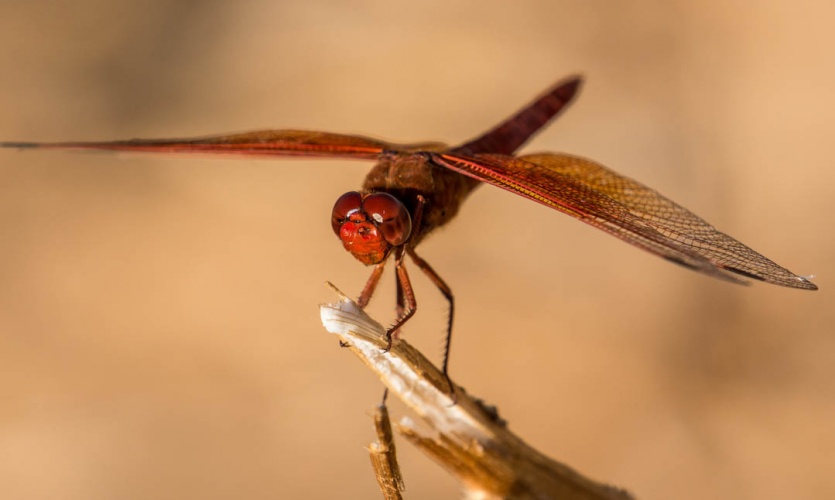Dragonfly inspires predictive vision for driverless cars
Scientists from the University of Adelaide in Australia and Lund University in Sweden have developed a machine vision system based on how dragonflies track their prey.

(Credit: Don Debold)
The system, designed with autonomous vehicles in mind, takes inspiration from a neuron in dragonfly brains that anticipates movement. Known as CSTMD1, the neuron increases the insect’s response in a small ‘focus area’ just ahead of the object being tracked. If a target disappears, the focus area spreads over time, following the previous path and allowing the dragonfly’s brain to predict where the target is most likely to reappear. This ability is being replicated in a small robot in Adelaide to test its potential for machine vision.
“It is one thing for artificial systems to be able to see moving targets, but tracing movement so it can move out of the way of those things is a really important aspect to self-steering vehicles,” said Dr Steven Wiederman, from Adelaide University’s Medical School.
“What we found was the neuron in dragonflies not only predicted where a target would reappear, it also traced movement from one eye to the other – even across the brain hemispheres.”
Register now to continue reading
Thanks for visiting The Engineer. You’ve now reached your monthly limit of news stories. Register for free to unlock unlimited access to all of our news coverage, as well as premium content including opinion, in-depth features and special reports.
Benefits of registering
-
In-depth insights and coverage of key emerging trends
-
Unrestricted access to special reports throughout the year
-
Daily technology news delivered straight to your inbox










UK Enters ‘Golden Age of Nuclear’
The delay (nearly 8 years) in getting approval for the Rolls-Royce SMR is most worrying. Signifies a torpid and expensive system that is quite onerous...